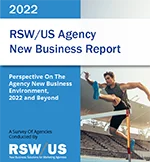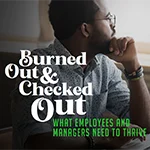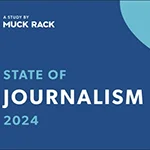 |
Obtaining new business has gotten considerably more difficult for agencies over the past year, according to the new edition of an annual study from lead generation/business development firm RSW/US.
While last year’s study reflected an environment in the midst of a recovery from the lockdowns and uncertainty of 2020, this year, the momentum of that comeback has slowed down. In 2021, just 28 percent of respondents said that pulling in new business was harder than it had been the year before. This year, that number rose to 43 percent.
In addition, only 17 percent reported that snagging new business is easier in 2022 than it was in 2021—a significant drop from the 38 percent who made that claim in the previous year’s survey.
The top hurdle cited was the difficulty agencies have in “breaking through” with clients. Even so, fewer respondents named this as a factor in 2022 (55 percent) than did so last year (59 percent).
Coming in next was the lack of opportunities in the market. Almost four out of ten respondents (39 percent) said there were fewer opportunities out there in 2022 than there had been last year. That’s a hefty jump from the 23 percent who said that in the 2021 survey.
The inability to find “the right person to drive the new business program” is also emerging as a major problem. While that was not mentioned at all last year, it was on the radar for 31 percent of respondents this year.
The study notes that not only are new business directors hard to come by, they also tend to have a relatively short tenure once they come to a firm (18 months). Agencies also seem to be less pleased with the results they are getting from their new business directors. In 2021, 60 percent of agencies said their last new business hire was “very to somewhat successful.” That number slid to 41 percent this year.
When it comes to what does succeed at bringing in new business, getting additional work from existing clients tops the list, followed by referrals and networking. Ranking much further down are such techniques as phone calls, social media, paid online marketing and traditional mailings.
Emails also get a big thumbs down. More than three-quarters (76 percent) of respondents said that they receive more than six emails per day. However, almost nine out of ten (88 percent) said that fewer than 10 percent of the emails they receive are effective.
“What we hear anecdotally, and see in this report,” the study’s authors say, “is how little agencies are using outbound tools.” But they add that outbound tools need not be ineffective. “With focused and strategic messaging to the right prospects, you can break through to your prospects.”
The RSW/US Agency New Business Report surveyed over 3,000 agency executives nationwide.


 Consumers who once demanded convenience now require consistent, multi-channel experiences that cater to them at every point. Brands must have a clear, audience-appropriate, and channel-specific voice across all platforms.
Consumers who once demanded convenience now require consistent, multi-channel experiences that cater to them at every point. Brands must have a clear, audience-appropriate, and channel-specific voice across all platforms. Employees at U.S. companies are experiencing high levels of burnout, but managers are lagging behind when it comes to their awareness of the problem
Employees at U.S. companies are experiencing high levels of burnout, but managers are lagging behind when it comes to their awareness of the problem Brand has a powerful effect on a company’s valuation, but the level of brand understanding in the investment community leaves a lot to be desired, according to a new study from Brodeur Partners, Interbrand and NewtonX.
Brand has a powerful effect on a company’s valuation, but the level of brand understanding in the investment community leaves a lot to be desired, according to a new study from Brodeur Partners, Interbrand and NewtonX. AI may still be viewed with a wary eye by most media pros, but its use is growing, according to a new study from Muck Rack.
AI may still be viewed with a wary eye by most media pros, but its use is growing, according to a new study from Muck Rack. A new study from Walker Sands says that some marketers have been putting the cart before the horse when it comes to the relationship between marketing channels and business outcomes.
A new study from Walker Sands says that some marketers have been putting the cart before the horse when it comes to the relationship between marketing channels and business outcomes.


 Have a comment? Send it to
Have a comment? Send it to 
No comments have been submitted for this story yet.